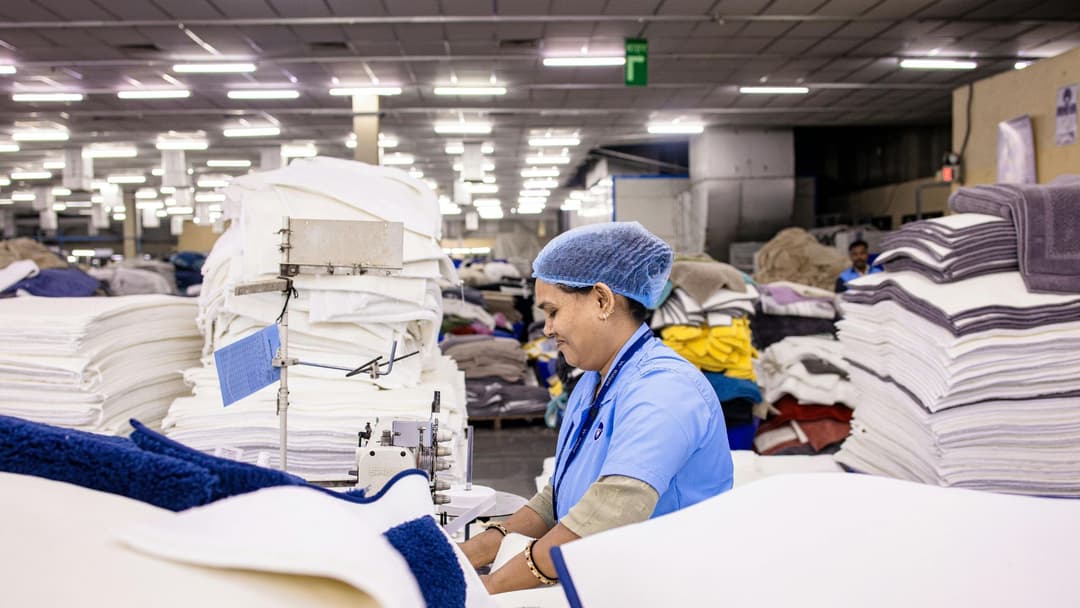Low-Cost Country Sourcing: Advantages, Trends, Tips
Optimize your supply chain with low-cost country sourcing. Reduce production costs, access skilled labor, and expand globally while managing risks effectively.

200+ buyers trust Torg for sourcing

In today’s fast-paced global economy, every company wants to cut costs without sacrificing quality. How to do that? Low cost country sourcing (LCC sourcing)—the practice of buying materials, components, or finished goods from countries with lower labor and production costs.
From big multinationals to small businesses, this has changed the way supply chains work, allowing companies to increase profits and stay competitive. But LCC sourcing isn’t without risks and pitfalls.
If you want to simplify your supply chain, find the best value country sourcing opportunities or just get a grip on how LCC sourcing works, this guide is for you. We’ll cover what LCC sourcing is, where to do it, the risks, and how to make it happen for you.
What is Low-Cost Country Sourcing?
Low-Cost Country Sourcing (LCCS) refers to the practice of procuring goods, services, or components from countries where the production or labor costs are significantly lower than those in the company's home country.
This approach is used in textile, electronics, automotive, and consumer goods industries. For example companies from US or Europe outsource their products from China, India, Vietnam, or Mexico where the cost of labour and raw materials is much lower than in Western markets.
What Are Low-Cost Countries for Sourcing?

1. China
China has been the LCC sourcing hub for years due to its massive production capacity and well-established supply chain. Although labor costs have increased recently, it’s still #1 for electronics, machinery, and consumer products.
2. India
India offers LCC advantages in IT services, pharma, and textiles. A large English speaking workforce and government incentives make it a good option for businesses to cut costs and maintain quality.
3. Vietnam
Vietnam has become a reliable LCC sourcing destination especially for apparel, furniture, and electronics. Many companies are shifting their operations here to enjoy competitive labor costs and trade agreements with Western countries.
4. Mexico
For US companies, Mexico is one of the best options due to its proximity, lower tariffs (USMCA agreement), and the automotive and textile industries already established. Shorter shipping time compared to Asia is an added logistical benefit.
5. Bangladesh
Bangladesh is a major player in garment and textile manufacturing, with the lowest labor cost in the world. Although it offers significant savings, companies must manage supplier relationships carefully to ensure compliance with labor and environmental standards.
Advantages of Low-Cost Country Sourcing
Cost Savings
The biggest perk? Lower costs. Countries with cheaper labor, raw materials, and lower overheads allow companies to cut costs without cutting corners.
Access to Labor
Many low cost sourcing hubs have skilled workers in manufacturing, textiles, and tech. So you’re not just saving money, you're also getting expert craftsmanship at a fraction of the price.
Scalability
Need to increase production quickly? No problem. Several LCC sourcing locations have huge factories that can be scaled up to meet changing production needs, so you can be agile and cost effective.
Market Expansion
Sourcing across multiple countries is not just about being cost effective it’s also about expanding into new markets. It can create opportunities for global B2B trade relationships and local partnerships, putting you ahead of the competition.
Increased Profits
With lower costs all round you can increase profits and invest in better products, better marketing and overall growth—without passing the costs on to the customer.
Risks and Challenges of Low-Cost Country Sourcing
Hidden Costs
While labor and production costs are lower, companies have to factor in shipping costs, import taxes, tariffs, and other costs associated with compliance and quality control. Unexpected expenses like logistics delays, exchange rate fluctuations, or last minute order changes can also impact profitability.
Supply Chain Disruptions
Political unrest, economic recessions, trade barriers, and natural disasters can cause supply chain breaks. Low cost country sourcing businesses need contingency plans, multiple suppliers, and adaptive logistics to mitigate risks.
Ethical Issues
Some low cost country sourcing countries are questioned on labor rights, child labor, poor working conditions, and environmental degradation. Companies have to do deep supplier audits, require transparency, and meet ethical sourcing certifications to protect their image and avoid legal liabilities.
Quality Control Issues
Production standards are vastly different and product quality can be uneven and cause defects, recall, and unhappy customers. Stringent quality checks, regular audits, and working with reputable third-party inspection agencies keeps production standards high.
Looking to cut costs without compromising quality? Find 150,000+ trusted suppliers on Torg—sign up for free today!
Low-Cost Country Sourcing Trends
In 2025, global sourcing strategies are undergoing significant shifts influenced by geopolitical developments, trade policies, and emerging market dynamics. Key trends include:
Diversification Beyond China
Rising production costs and geopolitical tensions have prompted companies to seek alternative sourcing destinations. Countries like Vietnam, India, Bangladesh, and Indonesia are emerging as viable options, offering competitive labor costs and improving infrastructure. This diversification aims to mitigate risks associated with over-reliance on a single country.
Impact of New U.S. Tariffs
The U.S. administration's implementation of reciprocal tariffs, including a 10% baseline on all imports and higher rates for specific countries, has disrupted global trade. Nations like Vietnam face significant tariffs, affecting industries such as fashion and technology. Companies are reevaluating sourcing strategies to navigate these challenges.
Shift Towards Emerging Markets
Emerging markets, particularly in Southeast Asia, Sub-Saharan Africa, and Latin America, are gaining prominence in global procurement. These regions offer growth opportunities due to industrial expansion and technological advancements. However, businesses must address challenges related to infrastructure, political stability, and ethical sourcing.
Strategic Sourcing in India
India is emerging as a top strategic sourcing destination, offering tariff-friendly environments and reduced geopolitical risks. Its stable economic growth and skilled labor force make it an attractive alternative to traditional sourcing hubs. Companies are increasingly considering India to diversify their supply chains.
Focus on Sustainability and Ethical Practices
There's a growing emphasis on sustainable and ethical sourcing practices. Companies are adopting eco-friendly materials, minimalist designs, and reusable packaging to align with environmental standards. Ensuring compliance with labor laws and environmental regulations is becoming crucial to maintain brand reputation and mitigate risks.
These trends underscore the need for businesses to adopt flexible and resilient sourcing strategies, balancing cost considerations with geopolitical, ethical, and sustainability factors to navigate the evolving global trade landscape effectively.
Factors to Consider Before Sourcing from Low-Cost Countries
Product Quality
Not all suppliers are created equal and so companies need to do sample testing, factory audits, and performance checks before placing large orders.
Supplier Reliability
A supplier’s ability to meet production deadlines, quality, and large orders is key. Check their previous client feedback, financial health, and industry reputation to prevent any disruptions.
Communication Barriers
Language differences, time zones and business protocol differences can cause misunderstandings during negotiations, contract terms, and production expectations. Using local sourcing agents, professional translators, and unambiguous written contracts can mitigate this.
Shipping & Lead Times
Longer transit times, customs handling, and variable shipping prices can impact supply chain efficiency. Companies should include freight charges, storage costs, and seasonal delays in shipping when planning procurement.
Legal and Regulatory Considerations
Import/export regulations, trade barriers and compliance legislation vary by country and can affect sourcing strategies. Stay up to date on tariffs, intellectual property rights, and global trade agreements to prevent legal issues.
How to Find the Right Supplier in Low-Cost Countries
Supplier Directories
Alibaba, ThomasNet, and Global Sources are online platforms that have a huge database of verified suppliers from various industries. Torg is another great option for buyers who are specifically looking for food and beverage manufacturers. These directories allow companies to shortlist suppliers based on location, production capacity, and certifications making it easier to find a reliable manufacturing partner.
Industry Specific Networks
Industry conferences and trade associations are great networking platforms for companies looking for reliable suppliers. Companies can learn about suppliers reputation, manufacturing capacity, and best sourcing practices by interacting with industry experts.
Trade Partnerships & Government Programs
Most governments offer incentives, tax relief, and trade agreements to encourage foreign companies to source locally. Initiatives like ASEAN Free Trade Area (AFTA) or China’s Belt and Road Initiative can make low cost sourcing even more attractive by reducing tariffs and improving logistics infrastructure.
Factory Visits & Audits
On-site visits and third party audits ensure a supplier complies with required quality and ethical standards. Physically visiting production centers allows companies to detect potential vulnerabilities, assess working conditions, and verify regulatory compliance before a partnership is signed.
Low-Cost Country Sourcing vs. Best-Cost Country Sourcing
Low-Cost Country Sourcing (LCCS) focuses on reducing costs by sourcing from countries with cheap labor and materials, often compromising on quality. It aims primarily at cost savings but may face risks like supply chain disruptions and lower quality products.
In contrast, Best-Cost Country Sourcing (BCCS) seeks a balance between cost efficiency and quality, sourcing from countries that offer competitive prices while maintaining reasonable standards of production, innovation, and quality control. BCCS minimizes the risks of poor quality while still achieving cost savings, making it a more balanced approach compared to LCCS.
While LCCS typically looks for the lowest possible price, BCCS considers both cost and value, offering a more sustainable and reliable option for businesses seeking competitive pricing without sacrificing product standards.
Best Strategies for Successful Low-Cost Country Sourcing
- Carry out proper market research – Research multiple low-cost countries of origin to compare workers’ costs, suppliers’ capabilities, and trade regulations. Based on this information, companies can decide the best value-country to source from with minimum risks.
- Negotiate correctly – Clearly define pricing, quality levels, delivery schedules, and penalties for non-performance. A well-written contract protects companies from surprise costs and a stable supplier relationship.
- Execute logistics correctly – Work with reputable third-party logistics suppliers (3PLs) and freight forwarders to get the best cost and lead time. Good logistics avoids supply disruptions and delays.
- Monitor & audit regularly – Carry out regular supplier audits, factory visits, and quality checks to ensure production standards. Ongoing monitoring ensures ethical, legal, and quality compliance, minimizing long-term risks.
Conclusion
Low cost country sourcing is huge for companies that want to cut costs and increase profit. But success depends on choosing the right suppliers, managing risks and quality.
Imagine a small company that was paying too much for manufacturing in their home country. By outsourcing to Vietnam they not only reduced costs but also entered new markets, so LCC sourcing can be a game changer—if done right.
By following best practices and being flexible companies can benefit from low cost country sourcing to increase profit and be competitive in the global market.
Request a Bulk Order Quote
Simple ordering, transparent pricing, delivered straight to your door

